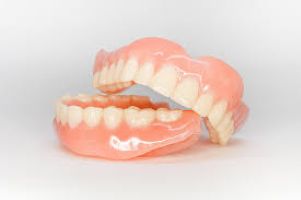Missing teeth can affect both your confidence and oral health. Today’s dental technology offers several implant options to restore your smile. A leading dental service can help you choose the right type based on your jaw structure, bone density, and personal needs. This guide breaks down the main types of dental implants available. Understanding these options will help you make an informed decision about your tooth replacement.
Traditional Dental Implants
Traditional dental implants are the most popular way to replace missing teeth. They have two main parts: a titanium post that is inserted into your jawbone and acts as a tooth root, and a crown on top that resembles your natural tooth. Your dentist will first check if you’re a good candidate for this procedure. The post is placed in your jawbone and needs a few months to heal and bond with the bone. Once healed, the crown is attached to complete your new tooth. These implants look natural and can last for many years with proper care.
Mini Dental Implants
Mini dental implants are smaller than traditional implants and work well for people who have less jawbone. They’re called small diameter implants because they’re thinner. Many people use them to hold lower dentures in place, which feels more comfortable than using adhesive paste. The placement process is simpler and often takes just one dental visit. While they may not be suitable for every situation, mini implants are a good choice if you prefer a less complicated procedure. Your dentist can tell you if they’re right for you.
All-on-Four Implants
All-on-Four implants use just four implants to support a full arch of replacement teeth. This technique is a complete solution for people missing most or all of their teeth. Here are five key points about All-on-Four implants:
- Needs fewer implants than older methods, which saves time and money during surgery.
- Works well for patients with low bone density because it utilizes the available bone more effectively.
- Gives you working teeth right away, so you recover faster and look better sooner.
- Provides a permanent solution, eliminating the need for removable dentures.
- It can often be done in just one day, giving you a new smile immediately.
Zygomatic Implants
Zygomatic implants, also known as zygoma implants, assist individuals with severe bone loss in their upper jaw. Regular implants require sufficient bone to hold them in place, but zygomatic implants utilize your cheekbone for support instead. This method helps individuals who have lost a significant amount of bone in their upper jaw. By attaching to the strong cheekbone, these implants skip the need for bone grafting, which makes treatment faster and easier. Zygomatic implants are a dependable way to restore both function and appearance when traditional implants won’t work due to bone loss.
Subperiosteal Implants
Subperiosteal implants sit under your gum tissue but rest on top of your jawbone. These implants are custom-made to match the exact shape of your jawbone, giving artificial teeth a secure base. Here are some key points about subperiosteal implants:
- They work for patients who don’t have much bone height in their jaw.
- The procedure involves placing a metal framework on the bone, with posts that hold the artificial teeth in place.
- Subperiosteal implants are less invasive than endosteal implants.
- They’re a good option for patients who can’t have bone grafting procedures.
- Regular follow-up appointments are necessary to ensure the implants remain stable and successful.
Endosteal Implants
Endosteal implants are the most commonly used type of dental implant for replacing missing teeth. These implants are small titanium screws placed directly into your jawbone to work as artificial tooth roots. Over time, your bone naturally bonds with the titanium, creating a strong base for your replacement tooth. Endosteal implants can support single crowns, bridges, or even full dentures, making them popular among many patients. When placed by a skilled dental professional, these implants have a high success rate and few complications. Endosteal implants provide a long-lasting way to restore your smile and improve how you chew.
Related Topics:






